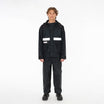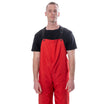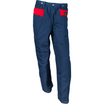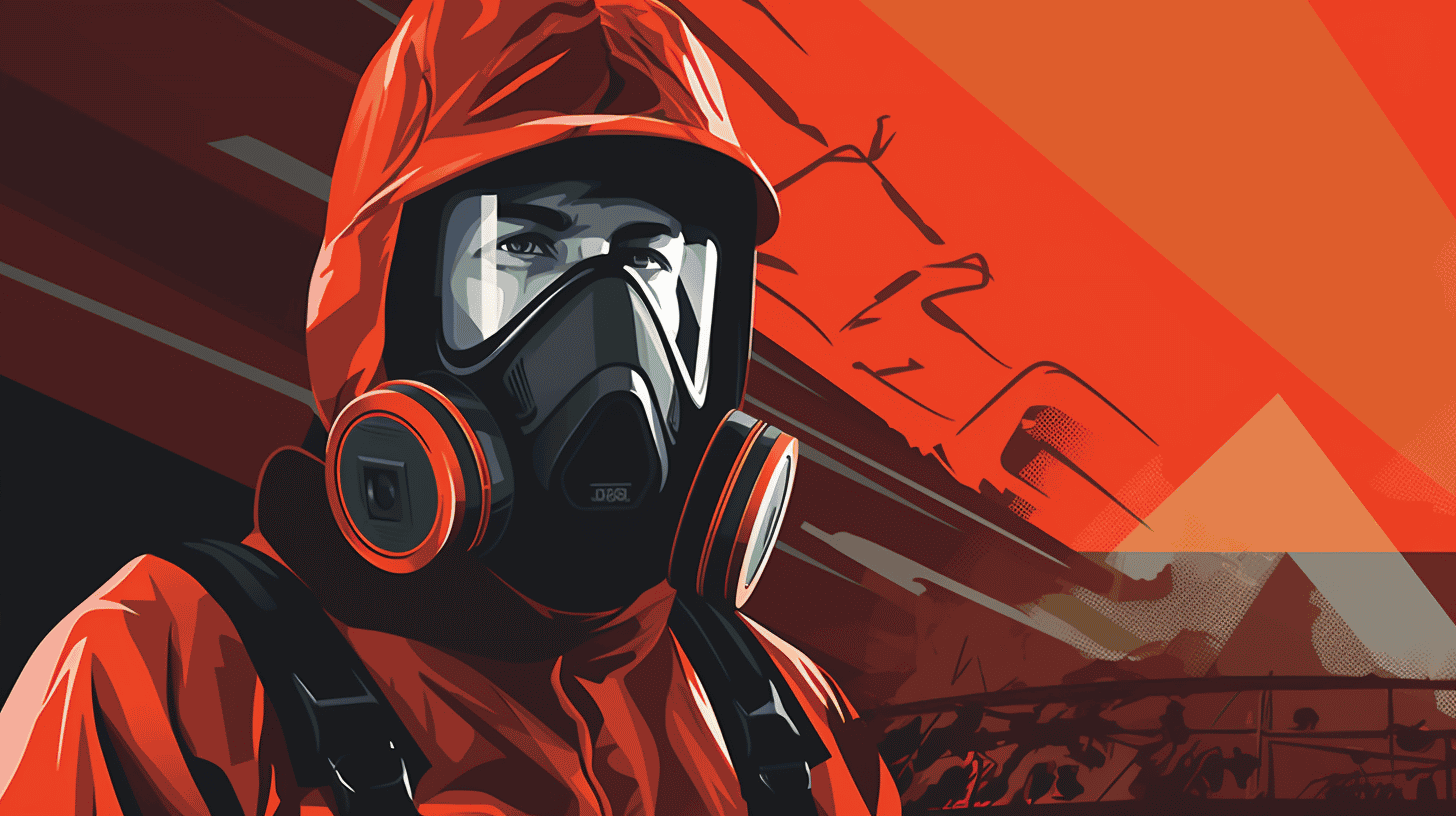As skyscrapers kiss the sky and homes nestle within nature, the demand for construction professionals to work at dizzying heights has soared. However, this escalating trend invites precarious situations, where individuals find themselves balancing on the razor's edge between daily tasks and significant risk. In this context, the faithful ally of a construction professional grappling with gravity is his or her fall protection gear. An essential element of a worker's occupational safety toolkit, it's a virtual lifeline that stands as a fortress against potential injury or sudden falls. In the forthcoming sections, we'll take a close look at the critical role of fall protection gear in the construction industry, the various types available, the respected standards surrounding them, how to choose, and maintain the right equipment, along with the importance of thorough staff training. Prepare for an enlightening journey into the world of fall protection. Safety has never been more captivating!
Importance of Fall Protection Gear
In today's fast-paced construction industry, fall protection gear has never been more crucial. This straightforward yet often overlooked aspect of construction site safety plays a vital role in preventing accidents, thereby safeguarding worker health and ensuring project continuity. Understanding the significance of fall protection gear promotes a safe work environment that fosters innovation, efficiency, and productivity.
One might wonder, why should we invest so much in fall protection equipment? The reasons are plentiful and justifiable.
First, there are the legal implications. Most regions have strict laws and regulations around construction site safety, making fall protection gear not merely an option but a legal mandate. Non-compliance with these requirements can result in litigation, hefty fines, and deep dents in your company's reputation.
Second, comes the morality and ethics of caring for your workers. Providing adequate fall protection equipment shows your workers that you care about their well-being and ensures that they feel safe at the workplace. A safe worker is a happy worker and happy workers are often more productive.
But the benefits don't stop there. Fall protection gear :
- Minimizes the risk of work-related injuries and fatalities.
- Boosts worker morale and productivity.
- Reduces downtime due to injuries.
- Avoids costly legal lawsuits and fines.
- Enhances overall business reputation and competitiveness in the industry.
Rapid advancements in technology have led to improvements in construction safety gear, offering better protection and increased comfort. Notably, it is essential to educate and train construction workers to correctly use and rely on these safety tools to thrive in their physically demanding and potentially dangerous work environment.
Remember, falling from height can cause serious injuries – and even fatalities. It's not just about ticking boxes for health and safety regulations; it's about saving lives and promoting a culture of safety. Thus, investing in fall protection gear must be a priority for the construction industry, integrating it into their core operations and safety practices.
Types of Fall Protection Gear
As you embark on your journey through the world of construction work, safety should always be your top priority. While considering the many risks involved, one area that deserves particular attention is fall protection. Given the heights that construction workers often operate from, having the right gear can mean the difference between an ordinary workday and an unexpected tragedy.
Let's look at various types of fall protection gear designed to keep you safe and secure on the job, as highlighted in our Essential Gear for Construction guide.
Harnesses
Harnesses are an integral part of any fall protection system. They distribute the force experienced during a fall, significantly reducing the likelihood of injury. Harnesses typically come with various features, including padded shoulders, adjustable straps, and multiple attachment points.
Lanyards
Lanyards handle the crucial job of connecting the harness to anchor points. If a person falls, the lanyard's length (typically between 3 to 6 feet) controls the distance of the fall, further reducing the impact.
Anchor Points
Anchor points secure your harness and lanyard to a solid structure. They need to be robust enough to support substantial weight loads, often able to support at least 5,000 pounds per person attached.
Lifelines
Lifelines offer a range of movement while ensuring safety. They come in two types - vertical and horizontal and can be mobile or fixed.
Guardrails
Guardrails serve as physical barriers that prevent falls. They're commonly used around edges, roofs, and holes where fall risks are high.
Safety Nets
Safety nets serve as backup protection, catching workers or tools should they fall from a significant height. They're particularly useful in locations where other approaches can't be implemented.
Fall Arrest Systems
Fall arrest systems are complete units designed to stop a fall quickly and safely. They generally consist of a harness, lanyard, and anchorage point.
Fall Restraint Systems
Fall restraint systems are similar to a fall arrest but focus on preventing falls from happening in the first place. They're designed to limit how close a worker can get to a fall hazard.
Body Belts
Body belts are often used in conjunction with a harness for added protection, offering a place to attach tools and providing some supplemental support.
Rescue Equipment
Rescue equipment such as descent devices, retrieval systems, and ladder systems are essential, should a rescue operation be needed after a fall.
Fall protection gear isn't just about improving safety at work; it's about fostering a culture of safety, where every individual understands the risks and the preventative measures in place. Remember, making the right choices when it comes to your protection could be a lifesaver.
Standards for Fall Protection Gear
When it comes to fall protection, the right gear is non-negotiable. Not only does it provide crucial safety support on the job, but it's also mandated by governing bodies such as the American National Standards Institute (ANSI) and the Occupational Safety and Health Administration (OSHA). These organizations are instrumental in establishing, enforcing, and certifying safety standards for fall protection equipment in industries like construction.
American National Standards Institute (ANSI)
The ANSI plays a pivotal role in ensuring the safety of workers at heights. Their standards for fall protection gear are meticulously designed and complied with globally. Among these standards include specifications for anchorage connectors, body harnesses, lanyards, self-retracting devices, and more.
Some highlights of ANSI elements in fall protection gear:
- Durability and strength: ANSI standards require rigorous testing under various conditions to ensure resilience and effectiveness of the equipment.
- Design specifications: Fall protection equipment must be designed to be user-friendly, easily inspected for wear and damage, and adaptable to various work scenarios.
- Performance: The gear must effectively minimize the impact of a fall on a worker's body and ensure quick, safe rescue if a fall occurs.
Occupational Safety and Health Administration (OSHA)
OSHA is a federal agency in the United States that's entrusted with setting and enforcing safety regulations across different industries. OSHA's fall protection standards are primarily designed for construction, general industry, and maritime sectors. These standards specify ranging from guardrail systems, safety net systems to personal fall arrest systems.
Here are some aspects of OSHA's fall protection standards:
- Scope of application: OSHA's standards apply to any walking or working surface that has an unprotected edge or side above a certain height.
- Training and education: Employers must provide training to workers who might be exposed to fall hazards.
- Inspection and maintenance: Regular inspection of fall protection equipment for wear, damage, and other deterioration is mandatory.
In the complex web of safety standards and regulations, comprehending these rules might seem overwhelming. To break it down for you, this article on Understanding Safety Ratings gives an in-depth explanation.
With both ANSI and OSHA standards at the helm, you can rest assured that every piece of your fall protection gear provides the optimum safety you need for your work at height. Remember, picking the right gear is just as crucial as following these standards. Stay safe and compliant at all times!
Selecting the Right Fall Protection Gear
Have you ever wondered how construction workers effortlessly glide through perilous heights with such confidence? Their secret lies in the essential armor of their trade: fall protection gear. However, the key challenge lies in settling on the perfect gear that fits their needs and the job requirements. Hence, our focus today is on illuminating the path to picking the right fall protection gear. So, let's dive right in!
Assessing the Work Site
Firstly, a critical step to this selection process is assessing the workspace. It's more than just eye-balling; it's about vigorously examining the area for potential fall hazards. Furthermore, evaluate the height at which the work will be conducted and the conditions under which such actions will occur. Any presence of obstructions, slip or trip hazards, and even weather conditions come into play and influence your gear choice significantly.
Considering the Nature of Work
Second on our list is the nature of the job itself. Is it a painting exercise, installing something, or an intricate task demanding substantial mobility? The answer will clue you in on the most appropriate means of fall protection to utilize. A full-body harness may be ideal for roofing or high-rise repairs, while other jobs might necessitate a safety net or guardrails. Remember, the gear must facilitate the work, not hinder it.
Understanding the Worker's Comfort
Let's not forget about the comfort of the workers. The time spent in the gear is no small consideration. An uncomfortable set can curb productivity and may even prove dangerous, affecting the worker's capacity to perform safely and efficiently. Factors such as size, fit, weight, and ease of use can significantly impact a worker's comfort and should be carefully analyzed before making a decision.
Inspecting the Equipment
The effectiveness of any fall protection gear heavily relies on the condition of the equipment. It may sound mundane, but regularly inspecting the equipment to ensure it's in tip-top shape is an absolute must. Any signs of wear, tear, loose threads, or damaged elements signify that the gear needs immediate replacement.
In the world of construction, ensuring the right gear investment, including optimum fall protection gear, is necessary for both safety and productivity. As we discussed in a previous post titled "Investing in the Best Gear", the importance of well-researched and quality protective gear can't be understated.
The road to choosing the right fall protection gear may seem daunting, but with a handy guide like this, you can stride with certainty. Because at the end of the day, the welfare of construction workers hinges on the gear they sport.
Maintenance and Inspection of Fall Protection Gear
The topic of fall protection gear is not only pertinent but essential when it comes to occupation safety, particularly for those working in high-risk environments such as construction sites. Guaranteeing the defense and safety of staff against falls is, of course, a critical aspect of any construction management plan. By taking proper care of fall protection equipment, we can ensure its longevity, functionality, and ultimate goal: Ensuring Construction Workers Safety.
Regular Inspection
An intrinsic part of the maintenance process is the regular inspection of the gear. Weekly, or bit more frequent checks, if the equipment is heavily used, can help identify any issues well in advance thereby, preventing accidents.
Key areas to check include:
- Harnesses: Look for any signs of wear and tear, such as frayed fabrics. Check the buckles and D-rings for any damages.
- Lanyards: Check if the connectors are functioning correctly and if there are any visible damages.
- Lifelines: These should be inspected for cuts or abrasions, especially in places where the line may come into contact with sharp objects.
Proper Maintenance
Maintaining fall protection gear isn’t rocket science. You don't always need a trained expert for this; simple preventive steps can make a significant impact.
Here's how you can maintain your equipment:
- Cleaning: Use mild soap and water to clean your gear, exclude the use of harsh chemicals as they can potentially damage the material.
- Storage: Store the equipment in a dry and well-ventilated area, away from direct sunlight or extreme conditions.
- Repairs: Don't attempt to mend any equipment yourself. Always send the damaged ones to professional repair services.
Replacement
Regardless of how well you maintain your gear, it won’t last forever. Knowing when to replace your fall protection equipment is crucial. Don’t hold on to damaged equipment, as they lose their protective properties with the passing time. Replace gear that has visible damages, is more than five years old, or has been involved in a fall incident.
Through regular inspection, proper maintenance, and timely replacements, we can extend the lifecycle of fall protection gear and most importantly maximize the safety of workers. Let’s strive towards creating a safe and protected environment where our labor force can operate without fears, because they matter!
Training for Use of Fall Protection Gear
In the construction field, fall protection gear represents a lifeline for workers operating at significant heights. Without the right training to use this gear, even the most technically advanced equipment fails to provide the security it's designed for. Workers need to understand the gear's proper use, necessary safety measures, and the vital role in responding to emergencies.
Proper Use
Construction workers often take on tasks in varying environments: from skyscrapers to bridges, every site presents unique challenges. Understanding the working dynamics of fall protection gear is crucial.
- Harnesses should fit snugly; it should not be too tight or too loose.
- The anchorage point must be strong enough to hold the worker's weight in case of a fall.
- The lanyard, used to connect the harness to the anchorage, must be of an appropriate length and strength.
Unswerving knowledge about fall protection gear, as highlighted in the article "Transforming Safety in Construction", can dramatically reduce workplace injuries.
Safety Measures
Before anyone steps foot onto a construction site, identifying potential fall hazards is crucial.
- Use guardrails or coverings for holes in the work surface.
- Always inspect your gear for wear and tear.
- Train yourself to use and manage tools properly to prevent dropping them from heights.
These measures will significantly reduce your chances of experiencing a fall-related accident.
Emergency Response
Even with proper use and strict safety measures, accidents can happen. Knowing how to respond to emergencies is equally critical.
- Workers suspended in a harness after a fall require immediate rescue to prevent suspension trauma.
- An emergency response plan should be in place and practiced regularly.
- All workers should be trained in first aid and CPR for quick response to accidents.
Every day, construction workers put their faith in fall protection gear to keep them safe. It's not just about wearing a harness—it's about understanding and respecting the gear and protocols designed to protect lives. Proper, ongoing training is essential to realizing the full potential of safety measures present on the job site. Ensuring that our hard-working crew members return home safely each day must be a priority, making training in the use of fall protection gear not just a regulatory requirement, but a moral obligation for every construction company.
Conclusion
Fall protection gear is indispensable in the field of construction, promising safety and security while on the job. Industries should not overlook the importance of maintaining and inspecting their equipment regularly for optimal efficiency and effectiveness. Simultaneously, employers ought to invest time in training their workforce about the proper use of such gear, prepping them to effectively respond during emergencies.
Whilst fall protection gear is vital, don't forget about the other array of protective wear out there as well. Hazards exist all around a construction site, not just above us. Armoring yourself from head to toe ensures a higher safety level so you can concentrate on the task at hand. For instance, chainsaw operators might consider adding a pair of sturdy, Canadian-made chainsaw safety pants, like the kind we provide at Rain Gear Pro. Much like your trusted fall protection gear, our pants promise unparalleled protection, optimal comfort, and are specifically engineered to combat common wear issues, like crotch blowout.
In the end, choosing the right gear, maintaining it properly, and knowing its correct usage could be the vital gear wheel that cranks the engine of safety. Mastering these components not only ensures your collective security and ultimately, your ability to return home safe after a hard day's work.
Frequently Asked Questions
-
What is fall protection gear?
Fall protection gear refers to equipment and devices designed to prevent or minimize the risk of falling from heights in construction sites. It includes items such as safety harnesses, lanyards, anchor points, and safety nets.
-
Why is fall protection gear important for construction workers?
Fall protection gear is crucial for construction workers as falls from heights are a leading cause of injuries and fatalities in the construction industry. Using the right gear reduces the risk of accidents and ensures worker safety.
-
What are the different types of fall protection gear?
The different types of fall protection gear include full-body harnesses, shock-absorbing lanyards, self-retracting lifelines, anchor points, safety nets, and guardrails.
-
How do I choose the right fall protection gear?
When choosing fall protection gear, consider factors such as the nature of the job, the height of work, weight capacity, comfort, ease of use, and compliance with safety regulations. It's important to select gear that meets the specific needs and requirements of the job.
-
Do construction workers need training to use fall protection gear?
Yes, proper training is essential for construction workers to effectively and safely use fall protection gear. Training should cover how to properly wear and inspect the gear, how to connect and anchor it correctly, and how to respond in the event of a fall.























Leave a comment
This site is protected by hCaptcha and the hCaptcha Privacy Policy and Terms of Service apply.